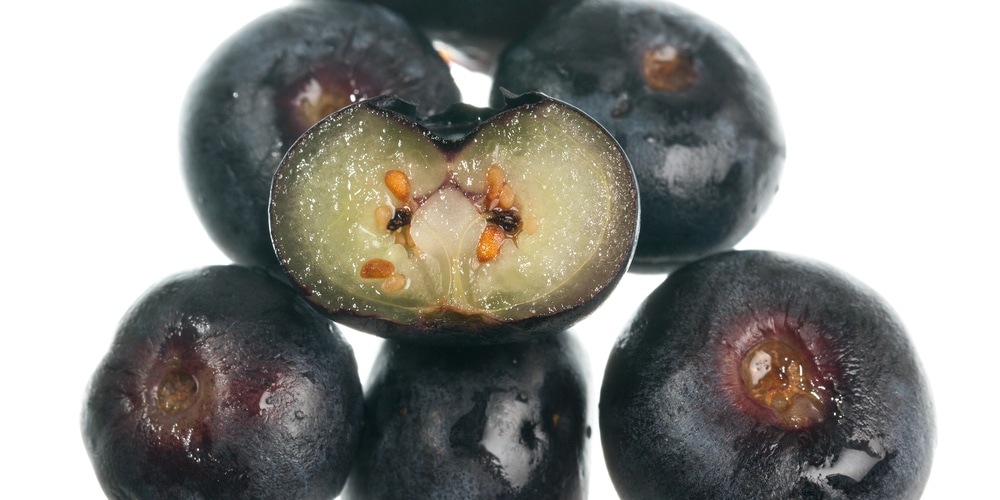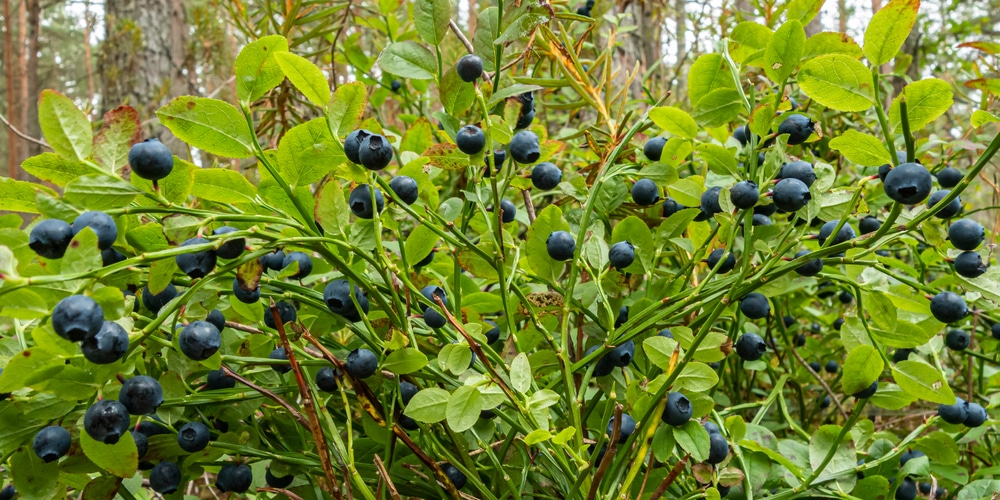Many people are surprised to find that blueberries have seeds and that they can be grown from seed. Blueberries come in different types; they are regarded as either highbush or lowbush, and both contain seeds.
The small pips inside blueberries can be extracted and used for propagation. Let’s look at how to extract blueberry seeds to cultivate a new blueberry bush which will hopefully bear fruit.
A Little Bit About Blueberries
Blueberries are packed full of antioxidants and nutrients and are one of the healthiest fruits available. They are grown on shrubs that grow from four inches to thirteen feet high, depending on the variety. These tasty fruits are part of the genus family of Vaccinium and are directly related to cranberries, huckleberries, and bilberries.
Blueberries come in two different types and are native to North America. Highbush blueberries are most commonly grown commercially and are the varieties you’ll buy in supermarkets. Lowbush blueberries are found on farms and also grow in the wild. They are especially common in the meadows of the Canadian provinces.
Blueberries start out as a pale green berry, and as they mature, they will turn to a reddish-purple and then to a dark purple or blue color. They also have a powdery protective coating which is an epicuticular wax known as the ‘bloom.’
While in many blueberry varieties, the seeds are very tiny, and you may not notice them immediately, there is no such thing as a seedless blueberry. Separating the seeds from the fruit in order to grow them is challenging, especially if the seeds are tiny.
How to Extract Blueberry Seeds
If you’d like to grow blueberries, you can either invest in a blueberry bush, buy ready prepared seeds or extract the blueberry seeds from the fruit and grow them. If you decide to extract your own seeds, there are a few different ways to do this. The following tips will help you extract blueberry seeds and get them ready for planting.
Mash the Blueberries
Perhaps the easiest way to collect seeds from blueberries is to mash the fruits. Blueberries can be mashed by hand using a potato masher. Crush about 1/3 cup of blueberries. While mashing, be careful not to get any juice on your clothes, worktops, or floor as it can cause stains.
Once you’ve mashed the blueberries, you can put them in a jar and adds water. You can then swirl the water around and remove the pulp. The seeds should begin to sink to the bottom. Continue swirling the water around and remove the pulp. Keep doing this until the pulp, skin, and seeds are separated. You can then drain the water from the jar and dry the seeds on a towel. Once they are dried out, they will be ready for planting.
Use a Blender
Another way to extract seeds from blueberries is to use a blender. Mix a three-quarters cup of blueberries with water and blend for about ten minutes. You can then turn off the blender and let the seeds settle to the bottom of the water. Remove the pulp and add more water to the blender.
Once you see seeds at the bottom, you can strain the mixture and dry the seeds using a towel. It’s easier and quicker to extract seeds from blueberries using a blender than mashing them.
Food Grinder
Instead of mashing or blending, you may like to use a food grinder to separate the blueberries seeds from the pulp. You can fill your grinder with blueberries and grind until a pulverized texture is achieved. Ensure that the pieces are minute.
You can then transfer the blueberries to a jar and add water, use the same method to extract the seeds as detailed above with the mashing method.
How to Grow Blueberry Seeds
When planting blueberries, you’ll need to consider the best location. Blueberries grow best in a sunny spot but can also thrive in semi-shaded areas. If you’re looking to grow a bumper blueberry harvest, it’s best to plant your blueberry seeds in the full sun. When the plants are in a well-light area, they will develop evergreen foliage.
Test the soils pH level
Before planting your blueberry seeds, you may also like to test your soil’s pH levels and check how acidic your soil is. Hardware stores sell pH test kits that allow you to test your soil easily.
Depending on the results of the test, you may need to apply an organic sulfur fertilizer. Blueberries prefer acidic soil with a pH of 4 to 5. If the soil is too off, your blueberry leaves can turn red. You can also add peat moss to your soil as this helps to improve the acidity of the earth. Peat moss is a great seed starter that can be added to potting soil. It’s beneficial to seedlings’ growth as it holds moisture and releases it to the plants’ roots. Peat moss also prevents the ground from drying out too much between watering.
Water Regularly
Blueberry plants need enough water and should be watered regularly, especially during the fruiting phase. It’s a good idea to install a drip system so that your plants get enough water. Creating a consistent watering routine will help the blueberries thrive.
Add Mulch
You can use organic materials such as pine needles, wood chips or shavings, sawdust, grass, or leaves as mulch around your blueberry plants. Add three inches of mulch to your topsoil to stop weeds growing, conserve moisture and feed the plants.
Net Your Blueberries
Once your blueberry bushes are mature and producing fruit, it’s a good idea to cover them with a net to stop the birds from stealing the fruit. You may like to use a netted gazebo during harvest to cover your fruits.
Pruning
Once your blueberry shrubs are five years old, you can prune them. Don’t trim the plants before this time as the first five years are the growing years. Mature blueberry plants can be pruned in the winter, and old stems can be cut off. Allow the middle age and young branches to stay on the plants.
Add soybean meals
If your blueberry plant is losing its leaves, you can add nitrogen to the soil in the form of soybean meals. Use one pound of soybean meal for every 100 square feet.
Conclusion
Blueberries do have seeds, but they are often minimal. Seeds can be extracted from the blueberries by mashing, grinding, or blending the fruits. They can then be used to cultivate new plants. Growing your own blueberries is exciting and rewarding; by following the above advice, you’ll grow healthy plants and have a good harvest.


